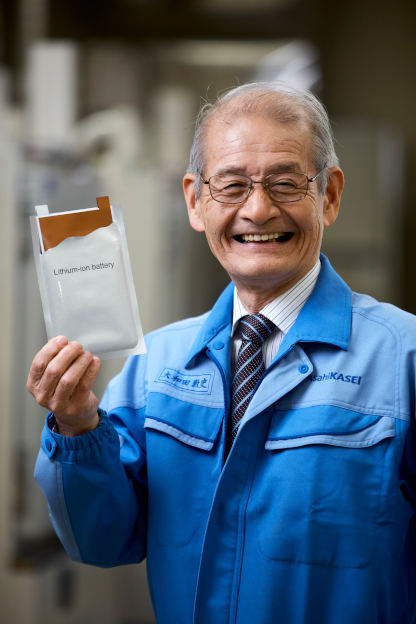e-motec: The arrival of Lithium Ion batteries have been nothing short of a blessing in the world of technology and gadgets. As a recent winner of the Nobel Prize in chemistry for the creation of the first commercially viable lithium-ion battery, can you explain your vision back in 1985 of where you imagined their best uses?
Dr.Yoshino: I started to work on the lithium-ion battery technology in the early 1980s, together with two colleagues. Back in those days the world was waiting for a new battery technology, replacing the primary batteries that were powering the portable electronic devices. When we were developing the secondary lithium-ion battery, we were mainly thinking about its application in Sony’s portable 8mm camera. At that time, we estimated a yearly production of around 12 million batteries worldwide – and nobody was thinking of its application in the automotive. The rising popularity of portable devices such as cell phones and notebooks beginning in the 1990s then changed the scenery completely.
e-motec: Was there a Eureka moment/discovery that led you to lead the team that would build the lithium ion battery prototype?
Dr.Yoshino : This is a funny story and it shows how little coincidences can lead to something great. In 1982, we were already working on the battery, but still struggling with the right combination of anode and cathode materials. During spring time I was cleaning up my lab when I stumbled across a research paper by John Goodenough, something I was planning to read for a while but just could not find the time to do so. Now I had the time! In this paper Goodenough elaborated on lithium cobalt oxide as a suitable cathode material. And this was the Eureka moment. We reconfigured our battery, using a carbon-based material for the anode, and lithium cobalt oxide for the cathode – and it worked!
e-motec: The impact of Li ion batteries has pushed electric vehicles from mere concept to a reality. With the appetite for energy storage solutions whetted along with the transport infrastructure electrification, there will be several contenders challenging the throne currently occupied by Li-ion. Where do you see the developments in this sector taking the Li-Ion in the future?
Dr.Yoshino: The lithium-ion battery is a mature technology – but only in its application in portable electronic devices. When it comes to its application in the automotive, there is still a lot of room for improvement. I personally am very much interested in reviewing the fundamentals of lithium-ions. The movements of lithium-ions differ greatly – depending on using a liquid or a solid electrolyte. By completely understanding the behavior of lithium-ions, we may be able to increase their speed. This will greatly enhance the current lithium-ion battery technology. Then, there is the use of different materials. Next to the electrolyte, using new material combinations for the positive electrode (nickel, cobalt and manganese) and the negative electrode (graphite and silicone) still bears potential.
Looking to the next-generation battery technology, the solid-state battery is a promising candidate. Japanese companies like TDK, Kyocera and Murata Manufacturing are starting to commercialize small solid-state batteries, for examples for applications in sensors. But it will take time before this battery technology finds its way into the automotive – maybe more than ten years. Asahi Kasei is also conducting research in this field.
CUT COTS OF THE FLEET WITH OUR AUDIT PROGRAM
The audit is a key tool to know the overall status and provide the analysis, the assessment, the advice, the suggestions and the actions to take in order to cut costs and increase the efficiency and efficacy of the fleet. We propose the following fleet management audit.




